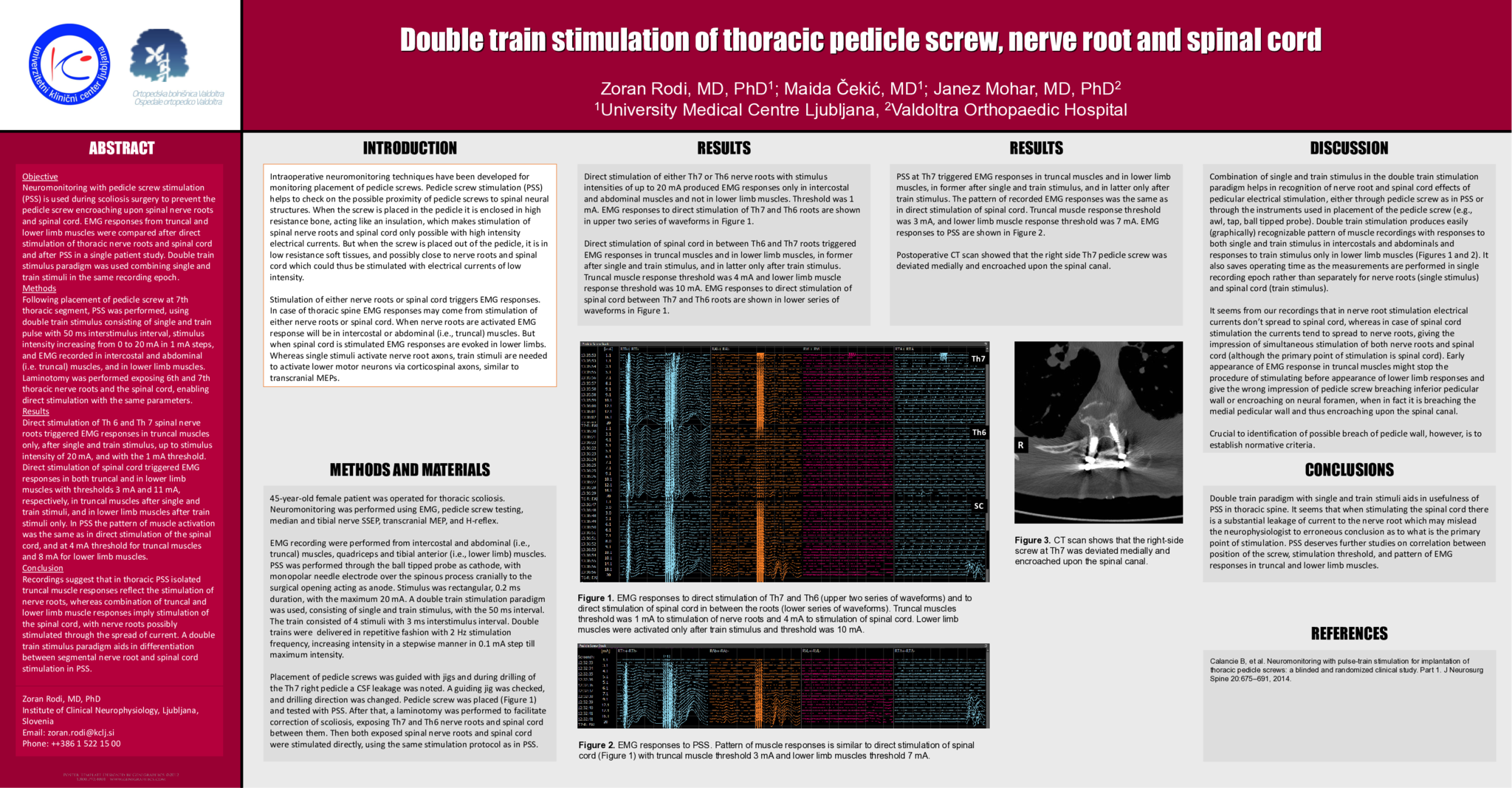Objective Pedicle screw stimulation (PSS) is used during scoliosis surgery to warn about screw malposition and impact on spinal neural structures. In thoracic segments, PSS may stimulate nerve roots, spinal cord or both. Single electrical pulse is sufficient to stimulate nerve roots, and train of pulses is needed for spinal cord. Methods Following placement of pedicle screw at 7th thoracic segment, PSS was performed, using double train stimulus consisting of single and train pulse with 50 ms interstimulus interval, stimulus intensity increasing from 0 to 20 mA in 1 mA steps, and EMG recorded in muscles of thoracic and lumbar segments. Laminotomy was performed exposing 6th and 7th thoracic nerve roots and the spinal cord, enabling direct stimulation with the same parameters. Results The PSS triggered EMG responses in truncal muscles after single and train stimulus with threshold 4 mA and in lower limb muscles only after train stimulus at 8 mA. Direct stimulation of both Th 6 and Th 7 spinal nerve roots triggered EMG responses only in truncal muscles after single and train stimulus at 1 mA. Direct stimulation of spinal cord triggered EMG responses in truncal muscles after single and train stimulus at 3 mA and in lower limb muscles only after train stimulus at 11 mA. Conclusion Recordings suggest that in thoracic PSS isolated truncal muscle responses reflect the stimulation of nerve roots, whereas combination of truncal and lower limb muscle responses imply stimulation of the spinal cord, with nerve roots probably being stimulated through the spread of current. A double train stimulus paradigm aids in differentiation between segmental nerve root and spinal cord stimulation in PSS.
- 4 views




